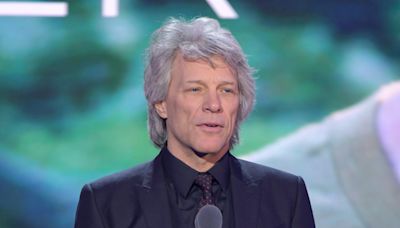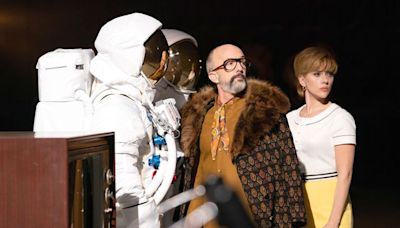Search results
The Moon is Earth 's only natural satellite. It orbits at an average distance of 384,400 km (238,900 mi), about 30 times the diameter of Earth. Tidal forces between Earth and the Moon have over time synchronized the Moon's orbital period ( lunar month) with its rotation period ( lunar day) at 29.5 Earth days, causing the same side of the Moon ...
Earth's Moon is the brightest and largest object in our night sky. The Moon makes Earth a more livable planet by moderating our home planet's wobble on its axis, leading to a relatively stable climate. It also causes tides, creating a rhythm that has guided humans for thousands of years.
Explore the moon's surface with Google Moon's interactive maps and detailed imagery.
2 days ago · Moon, Earth’s sole natural satellite and nearest celestial body. Known since prehistoric times, it is the brightest object in the sky after the Sun. Its name in English, like that of Earth, is of Germanic and Old English derivation.
What is the moon made of, and how did it form? Learn about the moon's violent origins, how its phases shaped the earliest calendars, and how humans first exp...
The Moon was likely formed after a Mars-sized body collided with Earth several billion years ago. Earth’s only natural satellite is simply called “the Moon” because people didn’t know other moons existed until Galileo Galilei discovered four moons orbiting Jupiter in 1610. In Latin, the Moon was called Luna, which is the main adjective for […]
4 days ago · All About the Moon. Quick Facts: Earth has just one moon – a rocky, cratered place, roughly a quarter the size of Earth and an average of 238,855 miles away. The Moon can be seen with the naked eye most nights as it traces its 27-day orbit around our planet. Credit: NASA/JPL-Caltech.
In Depth. The brightest and largest object in our night sky, the Moon makes Earth a more livable planet by moderating our home planet's wobble on its axis, leading to a relatively stable climate. It also causes tides, creating a rhythm that has guided humans for thousands of years. The Moon was likely formed after a Mars-sized body collided ...
Overview From Space Imagine you’re in a spaceship, traveling away from Earth. As you sail onward, you see our planet and its Moon locked together in their endless, circling, gravitational embrace. Your distant view gives you a unique perspective on the Moon that can be hard to visualize from the ground, where the Moon appears to sweep through the sky as an ever-changing globe of light.
The Moon can be seen in the daylit sky at any phase except for the new moon, when it’s invisible to us, and full moon, when it’s below the horizon during the day. The crescent through quarter phases are high in the sky during the day, but the daytime gibbous phases can be glimpsed only just before the Sun sets.





